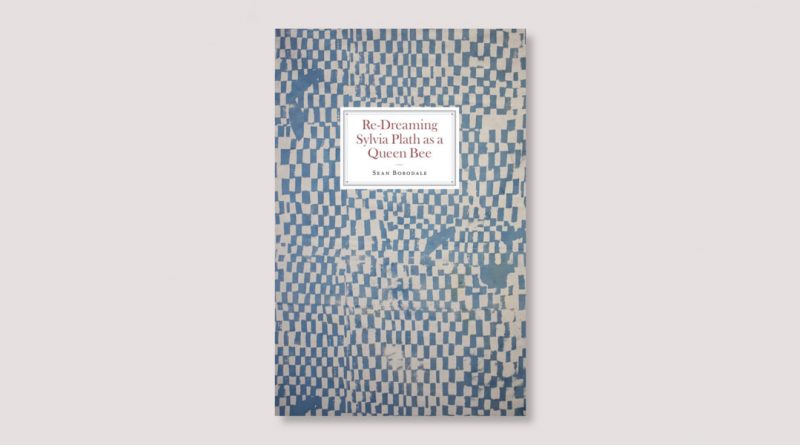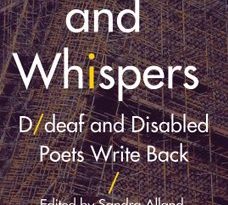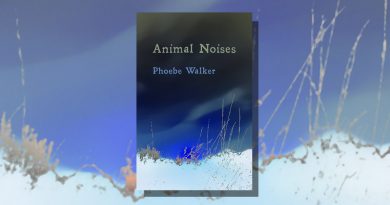Re-Dreaming Sylvia Plath as a Queen Bee by Sean Borodale
-Reviewed by Karen Goodwin-
Re-Dreaming Sylvia Plath as a Queen Bee is a hallucinatory essay, a daring reclamation of the poet as subject and hauntology of the author. Sean Borodale, a beekeeper and poet himself, pinpoints the moment these two worlds collide when his queen bee dies along with the hive on the eve of Plath’s suicide anniversary. This synchronicity begins a personal journey, recalled in his poem ‘10 February: Queen’ and collected in the diary sequence Bee Journal (Cape), and now this essay from the wonderful eco-publishers Hazel Press.
Taking for his starting point Plath’s father whose pioneering work Bumblebees and Their Ways made Otto Plath’s name as an entomologist in 1934. You can sense Borodale’s excitement as he tracks down a rare early edition in Blackrock, South Dublin. Holding the book in his hands it becomes more than talismanic, it’s a living link to Plath herself. It’s fascinating and chilling to read extracts lifted from Otto Plath’s fieldwork, observing bees in their wild state:
“Twenty-one queens of B. impatiens hibernating in the sod about the hole. All of them were numb…”
Borodale becomes a cypher for the source material, linking the worlds of scientific research, beekeeping and poetry. Much of this essay explores the legacy of Otto Plath’s study on the poet’s emergent voice from ‘The Beekeeper’s Daughter’ in her debut The Colossus where the father figure is “a maestro of bees” to the later extraordinary bee sequence in Ariel. It is well documented that the original ordering of Plath’s Ariel was to open with the word “Love” (‘Morning Song’) and end with “spring” (‘Wintering’) a hopeful message that turns away from the destruction of the season towards recovery and reinvention, using bees as a metaphor for survival:
Will the hive survive, will the gladiolas
Succeed in banking their fires
To enter another year?
What will they taste of, the Christmas roses?
The bees are flying. They taste the spring.
Plath herself kept bees in Devon where she lived with her husband Ted Hughes. ‘Stings’, ‘The Arrival of the Bee Box’, ‘The Bee Meeting’ are all informed by her real life experiences as a beekeeper in the community in which she lived. There is a practising concern for the environment in her poetry and Borodale notes that she would have been aware of Rachel Carson’s groundbreaking environmental essay Silent Spring published in 1962.
But Borodale’s reading takes this one step further and is concerned with a deeper act of mythmaking: “I am suggesting that what flickers through The Bell Jar and emerges fully-fledged from obliterated fragments drawn like splinters of glass from flesh in her final poems, is the shattered hologram of a Queen Bee’s life and death.”
He traces the stirrings of her ‘Queen Bee’ voice back to her debut collection The Colossus and her riddle-like sequence ‘Poem for a Birthday’ where the references to a hive are made clear:
This is a dark house, very big.
I made it myself,
Cell by cell from a quiet corner,
Chewing at the grey paper,
Oozing the glue drops
The sequence closes with ‘The Stones’ which he suggests “barely conceals the queen bee inhabiting it” with its piping city and jewelmaster prising open an eye with a chisel, as the beekeeper might lever open a hive.
This is not a new idea. Hughes has made mention of this new voice emerging in The Colossus, which he saw to be the direction in which Plath was heading as a poet. What is audacious is that Borodale is claiming Plath is speaking as a Queen Bee in these poems. There is something of the horror story about this idea and I am reminded of Roald Dahl’s tale of domestic macabre ‘Royal Jelly’ published in 1960 (Kiss Kiss).
He notes the proliferation of flowers in her work, flowers that sicken once domesticated (‘Tulips’) and bees that feed on a production line of Tate and Lyle “The refined snow” a substitute for real nutrition. The cycles in these poems, he suggests, have an internal energy, the life and death cycles of a bee.
Plath is a poet of tenderness too, there is a nesting instinct in Ariel, he suggests in such poems as ‘Nick and the Candlestick’, written for her baby son: “we feel we are dropping into her own bee-nest, its comb, and we listen to its beehive feeling in the gathering of roses, panes of ice, the waxy sides of cells in the dark place of the hive, holding its reservoir of luminous wax-energy.”
Borodale’s re-imagining of Plath creates an alternate psychedelic world where ‘Daddy’ and ‘Medusa’ are portraits of “disturbed queen bee parents” while ‘Lady Lazarus’ is “the voice of a bee surfacing to flight”. If I am unconvinced on all these points, it’s nonetheless thrilling to revisit such beloved, familiar poems with a bold new agenda.




